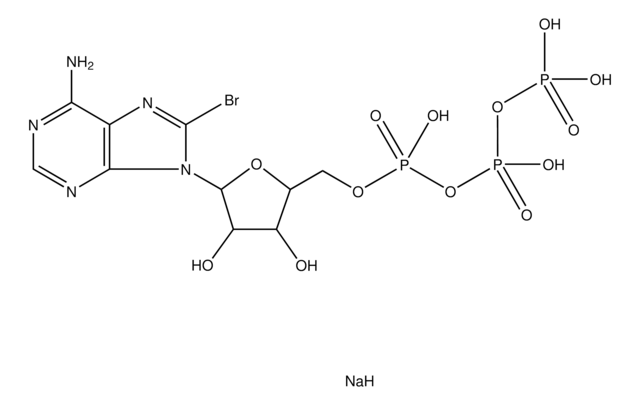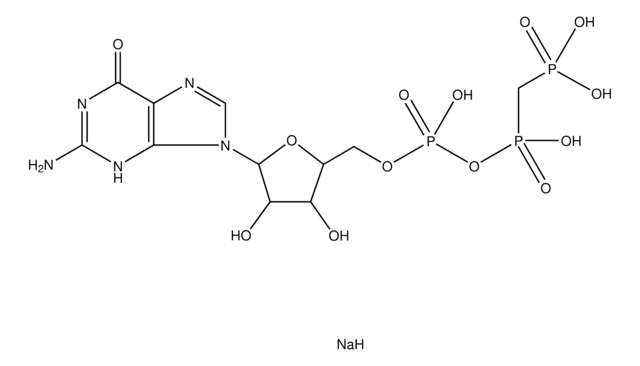M6517
α,β-Methyleneadenosine 5′-triphosphate lithium salt
≥93% (HPLC), solid
Sinónimos:
AMP-CPP
About This Item
Productos recomendados
Quality Level
assay
≥93% (HPLC)
form
solid
color
white
solubility
H2O: 100 mg/mL
storage temp.
−20°C
SMILES string
[Li+].Nc1ncnc2n(cnc12)[C@@H]3O[C@H](COP(O)(=O)CP(O)(=O)OP(O)([O-])=O)[C@@H](O)[C@H]3O
InChI
1S/C11H18N5O12P3.Li/c12-9-6-10(14-2-13-9)16(3-15-6)11-8(18)7(17)5(27-11)1-26-29(19,20)4-30(21,22)28-31(23,24)25;/h2-3,5,7-8,11,17-18H,1,4H2,(H,19,20)(H,21,22)(H2,12,13,14)(H2,23,24,25);/q;+1/p-1/t5-,7-,8-,11-;/m1./s1
InChI key
NVHVREPTGDOYIC-YCSZXMBFSA-M
Gene Information
human ... P2RX1(5023)
Categorías relacionadas
Application
- as P2-purinoreceptor agonist (P2X), to analyse its effects on membrane conductance in the astrocytes of caudal nucleus
- as a P2X receptor agonist, to increase the calcium current in the neurons in satellite cells
- to determine the functional sensitivities of purinergic agonists on P2Y receptors in rat and to determine its effect on developing outer sulcus cells
Biochem/physiol Actions
Features and Benefits
Physical form
signalword
Warning
hcodes
Hazard Classifications
Eye Irrit. 2 - Skin Irrit. 2 - STOT SE 3
target_organs
Respiratory system
Storage Class
11 - Combustible Solids
wgk_germany
WGK 3
flash_point_f
Not applicable
flash_point_c
Not applicable
ppe
dust mask type N95 (US), Eyeshields, Gloves
Elija entre una de las versiones más recientes:
¿Ya tiene este producto?
Encuentre la documentación para los productos que ha comprado recientemente en la Biblioteca de documentos.
Los clientes también vieron
Nuestro equipo de científicos tiene experiencia en todas las áreas de investigación: Ciencias de la vida, Ciencia de los materiales, Síntesis química, Cromatografía, Analítica y muchas otras.
Póngase en contacto con el Servicio técnico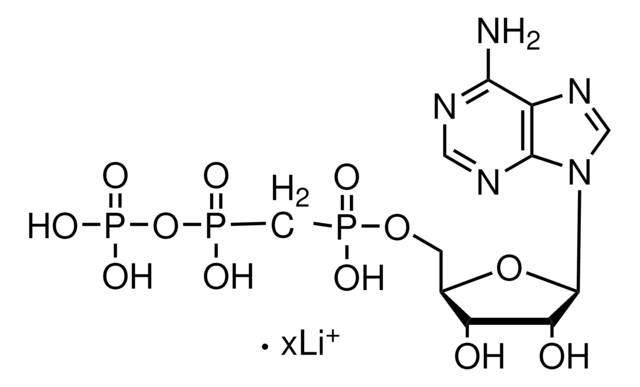
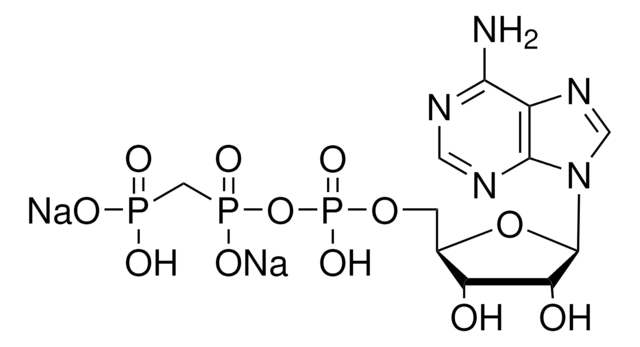
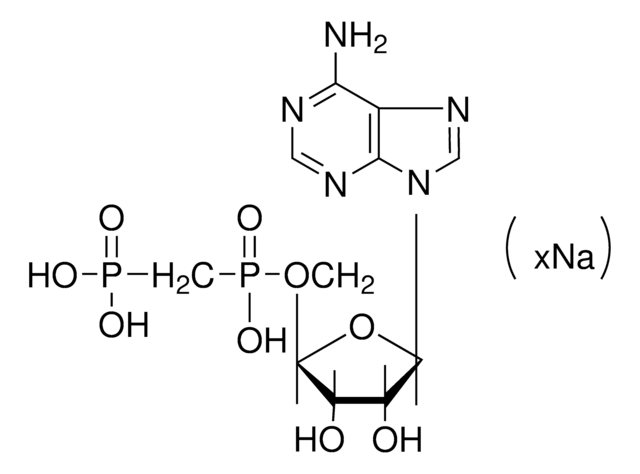
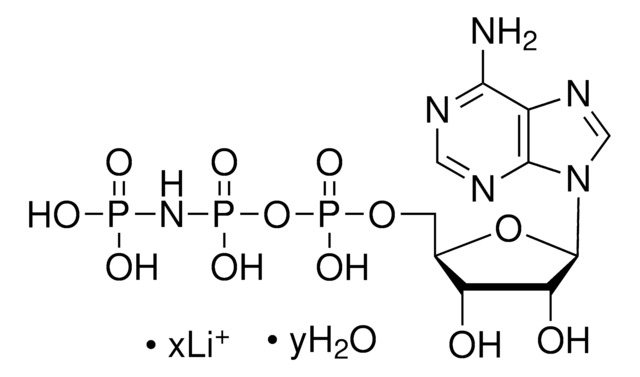


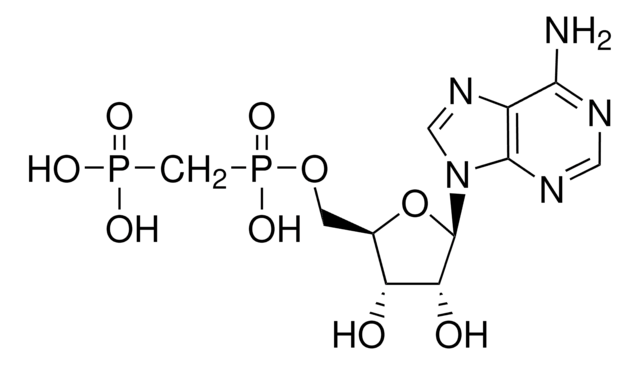

![Adenosine 5′-[γ-thio]triphosphate tetralithium salt ≥75% (HPLC), powder](/deepweb/assets/sigmaaldrich/product/structures/319/398/e29221c2-3649-455b-bd33-583bb017ec7d/640/e29221c2-3649-455b-bd33-583bb017ec7d.png)
![Adenosine 5′-[β-thio]diphosphate trilithium salt ≥80% (HPLC)](/deepweb/assets/sigmaaldrich/product/structures/666/651/b097613c-0d79-4acf-9a09-a0a42234d7bd/640/b097613c-0d79-4acf-9a09-a0a42234d7bd.png)


